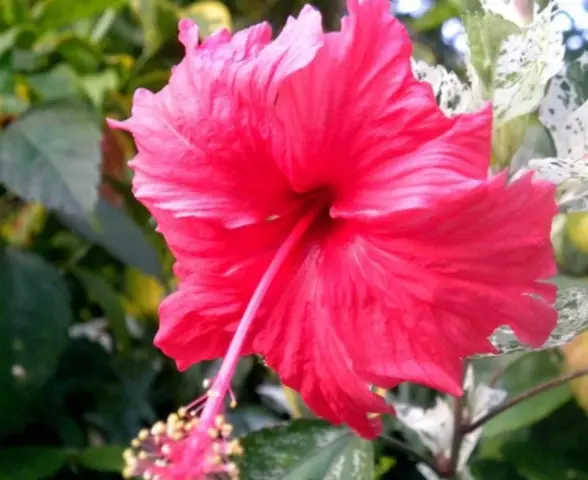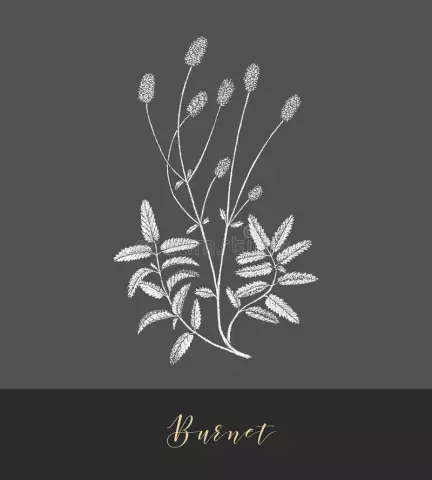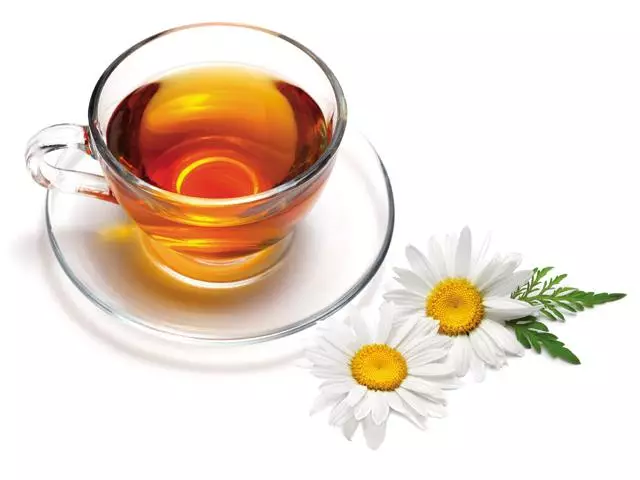- Author Rachel Wainwright [email protected].
- Public 2023-12-15 07:39.
- Last modified 2025-11-02 20:14.
Chamomile officinalis
Instructions for use:
- 1. Description
- 2. Application history
- 3. Chemical composition
- 4. Application in traditional medicine
- 5. Application in official medicine
- 6.use in cosmetology
- 7.description of contraindications

Chamomile officinalis is an annual plant belonging to the Asteraceae (or Asteraceae) family.
Description of chamomile officinalis
The stem reaches 40 cm in height. The leaves of the plant are sessile, dissected into narrow lobes. Inflorescences are singly located at the ends of the stems. Blooms from May to July. It has a pleasant aroma during flowering.
In the wild, the plant is found in the middle lane and in southern Europe. It grows on wastelands and fields, on forest edges, slopes and roadsides. As a medicinal plant, it is cultivated on plantations.
For medicinal purposes, the flowers of the plant are used.
Application history
For medicinal purposes, the plant has been used since the days of Ancient Rome and Greece.
A description of chamomile medicinal can be found in the fundamental work of the Roman scientist Pliny the Elder "Natural History". He called this plant chamaemellon (translated from Greek chamai means "low", and mellon - "apple").
And the common Russian name for the plant "chamomile" is borrowed from the Polish language and comes from the word romana, which is translated from Latin as "Roman".
Chemical composition
The plant is rich in various biologically active substances. The inflorescences contain a small amount of essential oils (0.2-0.8%), in which you can find sexviterpenes (myrcene, farnesene), a-bisabol, chamazulene, cadinene, isovaleric, nonyl and caprylic acids.
Also, the inflorescences of medicinal chamomile contain sugars, phytosterols, flavonoids (patuletin, apigenin, chrysosplenin, chrysoeriol and their glycosides), protein substances, luteolin, cosmosiin, quercimertin, gum, pectins, tannins and mucous substances, coumarins, trioxide derivatives, methoxins choline, beta-carotene and other vitamins, ascorbic, salicylic and nicotinic acids, and many other useful compounds.
The use of chamomile medicinal in folk medicine
In the medical field, chamomile is one of the most sought-after plants. For treatment, extracts and infusions of flower baskets of the plant are used, as well as essential oil.
Chamomile medicinal has found application as a hemostatic, anti-inflammatory, sedative, analgesic, astringent, weak antibacterial, antispasmodic and choleretic agent. Infusions, teas and decoctions from the plant are taken for insomnia, diarrhea, flatulence, diseases of the biliary tract and liver, intestinal spasms and as a diaphoretic. Extracts from the plant have a positive effect on the central nervous system, stimulate the secretory function of bile and gastric juice.
The use of chamomile officinalis in official medicine
In official medicine, plant-based preparations are used for diseases of the liver and digestive tract, for irritation of the mucous membrane of the pharynx and oral cavity, as well as for inflammatory diseases of the upper respiratory tract.

In the pharmaceutical industry, medicinal products are made from the inflorescences of medicinal chamomile, including herbal preparations, recutan, romazulan, rotocan and others.
Chamomile essential oil has a diaphoretic, disinfectant and soothing effect, relieves pain, reduces gas formation, normalizes digestive functions, and weakens inflammatory processes in the body.
Chamomile officinalis: use in cosmetology
In the cosmetic industry, the plant is widely used in the manufacture of children's care products (lotions, soaps, oils and creams). It is included in shampoos, tanning products, balms, lipsticks, toothpastes.
An infusion of medicinal chamomile is a popularly known remedy for making blond hair shine, and decoctions from the plant make the skin soft, soft and velvety. Extracts from the plant have a moisturizing, wound healing, anti-inflammatory, emollient and anti-allergic effect on the skin.
Chamomile officinalis: description of contraindications
The use of herbal medicines is contraindicated in pregnancy. Chamomile essential oil in large doses can cause headaches and general weakness.
Information about the drug is generalized, provided for informational purposes only and does not replace the official instructions. Self-medication is hazardous to health!






